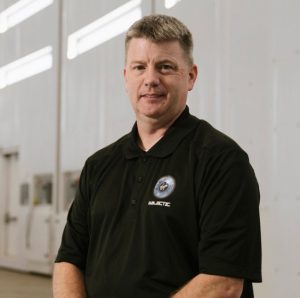Enlarge / In February 2019, Virgin Galactic’s SpaceShipTwo reached space for the second time in 10 weeks.
On Monday, Virgin Galactic announced that it will conduct its next commercial spaceflight, Galactic 03, as early as September 8. This will be the company’s third commercial spaceflight, and it will carry three as-yet-unnamed passengers who bought their tickets on the company’s space plane back in the early 2000s.
Should the flight occur in early September, it will mark the company’s fourth spaceflight in four months, an impressive cadence after a fairly long downtime. Such a flight would also cement Virgin Galactic’s leadership in the suborbital space tourism race with Blue Origin, which has been grounded for nearly a year after a launch accident with its New Shepard System nearly a year ago.
To understand why there was such a long downtime after Sir Richard Branson’s flight on Virgin Galactic in 2021 and to learn how the company has reached a monthly flight cadence, I recently had a long interview with Mike Moses, the company’s chief of operations and president. Moses came to Virgin Galactic in 2011 from NASA, where he worked as a flight director and then as a senior leader of the Space Shuttle program.
 Enlarge / Mike Moses came to Virgin Galactic in 2011 from NASA.
Enlarge / Mike Moses came to Virgin Galactic in 2011 from NASA.
Virgin Galactic
In this interview, we discuss how long the company’s current spacecraft, VSS Unity, can keep flying, plans to introduce a new Delta-class family of spaceships, and why there probably will always be pilots at the controls of Virgin Galactic. This conversation has been edited lightly for clarity.
Ars: You came to Virgin Galactic in 2011. Can you tell me a little about your decision to leave NASA? Was it because the shuttle program was over but you wanted to continue to do human spaceflight?
Mike Moses: That’s kind of it in a nutshell. It was an honor and a privilege to be there at the end of the shuttle program and kind of lead that team through. Bittersweet to be closing it out, but we know we finished strong, and everything went really, really well. I was contemplating what was next.
I was probably going to head up to headquarters with Gerst [NASA Associate Administrator Bill Gerstenmaier] and Bill Hill and work on what is now Artemis. And when I looked at that—it was a long way away, even back then, when they were being very optimistic with the pacings. I just wanted to keep doing operations. I had a very big heart-to-heart conversation with Gerstenmaier, and he didn’t push me out the door, but he said, ‘Don’t feel bad about leaving. You’re going to do as much for commercial space as you would if you stayed here. Take these lessons and go.’ That was the little confidence boost I needed to make the switch into commercial space.
Advertisement
Ars: What do you think about the commercial space industry at the time?
Mike Moses: Back then, they were just getting ready with Commercial Crew. They [commercial providers SpaceX and Orbital Sciences] hadn’t even flown cargo yet. So that’s where the suborbital market was, and I thought they would probably be the first ones to make it, before the orbital stuff. It turns out that’s not the way it played out.
Anyway, I contemplated that and felt if I was gonna stick around and do orbital stuff, I would have probably stayed at NASA for it. This was a chance to come try something that really is about giving people experiences. In the government, that’s not really what you do, right? You’re doing a service. So it was kind of a unique challenge for me. I think I was the sixth employee in the operations team. We had a procurement person, a safety person, and a medical person in, then me. I was going to help build it from scratch, and that was a huge appeal to me.
Ars: So it’s been 12 years. From an engineering standpoint, what has been the biggest challenge of getting a relatively small vehicle to space and back?
Mike Moses: One of our challenges is the air launch capability. It’s a great benefit of our system, but we have to be very careful with it. We transition through a large number of flight regimes. If you think about it as an airplane, we separate away; we’re very heavy when we release Unity from the Mothership. And we’re subsonic with a very back-heavy center of gravity when we light the motor. We’re basically like any rocket in that we’re half propellant.
Within 60 seconds, we’ve lost half our weight, we transition supersonic, we go vertical, and now we’re on our tail. Then, when we come back down, you’ve got to break the sound barrier. You’re in a feathered configuration, and now you’re a very light, forward center-of-gravity aircraft. To optimize the flight-control systems, to be able to handle all of those regimes, you really have to get some flight test data in each of them and then put it together and optimize.

